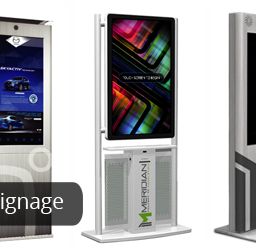
In this article, we’ll take a deeper look into how QSR and Fast Casual restaurants are leveraging food service kiosks to increase customer satisfaction and decrease overhead costs.
What are the Benefits of Food Service Kiosks?
While QSRs have provided customers with fast and convenient service for almost a century, Fast Casual is a new trend, quickly becoming a favorite amongst restaurant diners. Fast Casual restaurants, such as Chipotle, Panera Bread and Noodles and Company have gained popularity by blending the QSR and casual dining experience. While QSR and Fast Casual restaurants may offer their customers different experiences, both are designed around the concept of convenience, and both are starting to leverage food service kiosks to deliver on that promise.
Time
Self-service kiosks are known for saving time and cutting lines. For QSR and Fast Casual restaurants that promote their convenient service, self-order kiosks present a new opportunity to improve customer experience. Self-order kiosks allow businesses to direct traffic in restaurants by placing the self-order kiosks in a strategic location. This saves time for customers and allows them to quickly place their order without waiting in long lines. The kiosks also allow employees to reallocate time previously spent taking orders. With a self-service solution taking orders, employees can focus on dining service, restaurant cleanliness and customer experience.
Control
Self-order kiosks give consumers control of their dining experience. By leveraging self-order kiosks, restaurants enable their customers to choose when and how they want to order, pay for and receive their meal. This is especially true with the integration of applications that allow customers to order via their smartphone.
Automation
Consistency creates credibility. Self-order kiosks can automate the ordering and payment process, creating a reliable experience for customers. Self-order kiosks can also automate the up-selling process, capturing the highest percentage possible of up-sell opportunities. The automated process encourages customers to explore the menu and creates better ROI for the restaurant.
How are Food Service Kiosks Being Used?
Food service kiosks decrease long wait times, and therefore, the number of lost customers. Here are some of the ways food service kiosks help restaurants reduce wait times, boost food quality and improve customer service.
 Order-Entry
Order-Entry
Restaurants can leverage food service kiosks for self-order entry. Order-entry kiosks allow employees to reallocate the time previously spent on taking orders to provide more efficient and accurate service while reducing transaction costs. Order-entry kiosks also make it easier for customers to customize their meal and decrease the chance of order error. Restaurants can choose from countertop, free standing, wall mounted and outdoor self-ordering kiosks to best fit their needs and those of their customers.
Automated Upselling
The key to upselling is consistency. Food service kiosks can automatically offer upsells to every customer multiple times throughout their ordering process, eliminating the chance of employee error. Depending on the kiosk technology, food service kiosks can customize the upsell based on the customer. For example, if a customer is part of a restaurant’s rewards program and scans their card, the kiosk can offer upsells based on the customer’s number of rewards or previous order history.
Bill-Pay
Food service kiosks with bill-payment capabilities provide customers with a fast and efficient check-out process. Self-service bill-payment solutions improve the restaurant experience for customers by allowing users to skip the check-out line, while freeing up employees to assist customers with more complicated service requests.
Order Pick Up
Kiosk technology can provide secure, kiosk managed storage to simplify order pick up. Restaurants can use food service kiosks, such as an automated locker system, to increase order capacity, decrease store congestion, increase customer base and reduce overhead. For example, Meridian’s mBOX allows customers to order and pay for their meal online or using a mobile app, then skip the line to retrieve their order directly from the secure locker system.
Survey
Food service kiosks can also help restaurants learn more about their customers. In-store surveys collect consumer insights while they are still in the establishment. Restaurants can use the information to target and serve their customers more accurately.
The Future of Food Service Kiosks
While food service kiosks have surely made an impact on the industry, there’s still plenty of room for growth. In a study done by Tillster, it was revealed that only 18 percent of QSR customers surveyed had used a self-ordering kiosk in a period of three months, but that 60 percent said they would go to a QSR more frequently if kiosks were offered. This creates an opportunity for all QSR and fast casual restaurants to provide customers with the many benefits of food service kiosks.

 Order-Entry
Order-Entry

